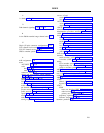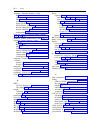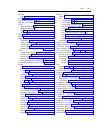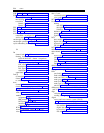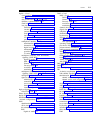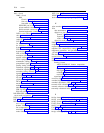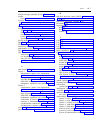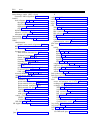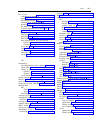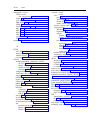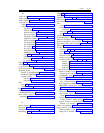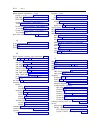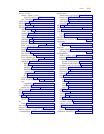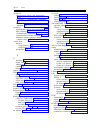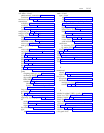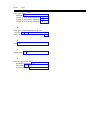
INDEX IN-13
service—
Contd
/facility options—
Contd
System 85 Release 2 7-7
type, DMI-MOS 2-3
shared channel 2-10
SID-ANI 1-28, 7-128
signal, preequalized 3-9
signaling 2-6
24th-channel 1-14, 2-3
AT&T proprietary 1-14
bundling 2-11
channel 1-4
cross-references D-2
DMI-BOS 1-14, 2-3
DMI-MOS 1-14, 2-3
dual-tone multifrequency (DTMF) 2-6
E&M (reverse-battery) 2-6
framing 2-13
inband 1-14
ISDN trunk 1-25
link code (SLC) 2-7
nonfacility associated 2-14
R2V4 alternate type translations D-6
reverse-battery (E&M) 2-6
robbed-bit 1-14
B8ZS 2-7
D4 framing 2-5
definition 1-14
DS1/DMI-BOS connection to D4-
channel bank 2-5
VBR 2-11
ZCS 2-7
system number 7 7-30, 7-88
trunks supporting type 20 7-25, 7-83
type
compatibility D-7
definitions D-8
variable bit robbed (VBR) 2-11
signals, channel 1-7
SLC 2-7
SLIM 2-7
slip 1-17, 8-8
controlled 5-3
excessive 8-8
slot
virtual 6-6
slot, virtual 6-6
Software Defined Network (SDN) 1-28
software operation, System 75 and Generic 1
synchronization 5-12
special access
administration requirements A-1
channel unit 6-11
connections 2-6
office (SAO) 6-11
subscriber 6-11
SS7 7-30, 7-88
station identification (SID) number 1-28
strata 5-5
stratum-4
type I 5-5
type II 5-5
subscriber, foreign exchange 4-7
subscriber loop interface module (SLIM) 2-7
superframe
D4 1-10
framing format 1-15
supported
digital facilities 6-2
port types, Generic 1 DS1/DMI-BOS 6-4
synchronization
4ESS to another system 2-7
accuracy 5-4
architecture
System 75 and Generic 1 5-11
System 85 and Generic 2 5-7
computers in private networks 2-4
conclusions 5-29
digital facilities 5-1
engineering 5-18
hierarchy 5-3
layers 5-5
levels
bit 5-1
character 5-1
frame 5-1
message
5-1
time-slot 5-1
link
5-1
misconceptions 5-28
need for 5-1
network 5-1, 5-18
plan 5-29
primary reference 5-4
secondary reference 5-4
software operation, System 85 and Generic
2 5-9
sources 5-28
special-access applications 2-15
synchronous transmission 5-1



